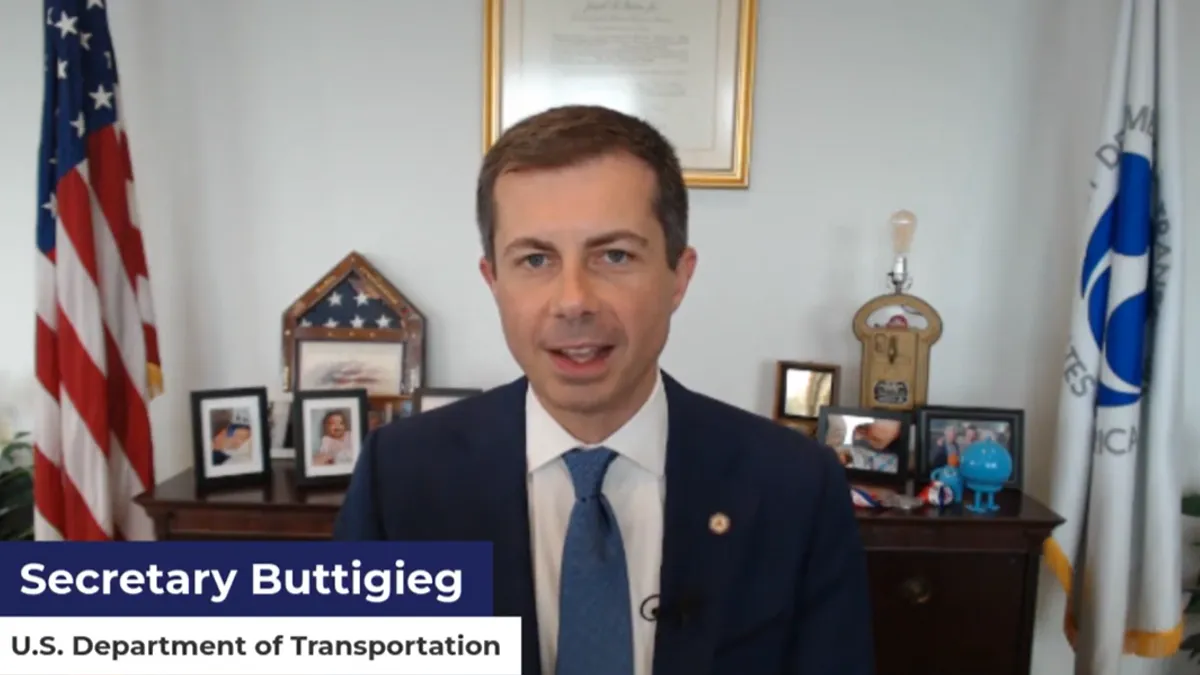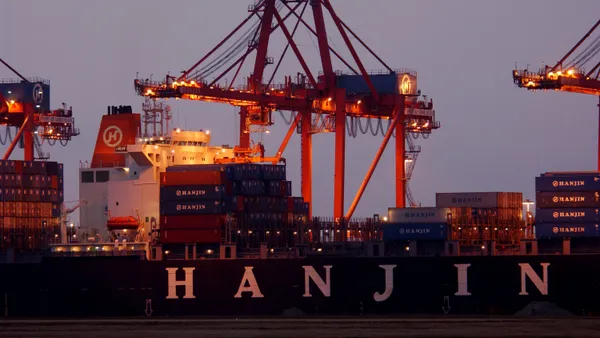Editor’s note: This story is part of a series highlighting takeaways from a July 24 event hosted by Supply Chain Dive, Trucking Dive and Manufacturing Dive. Register here to watch the replay on demand.
Department of Transportation Secretary Pete Buttigieg credited infrastructure spending in helping better absorb supply chain disruptions.
Buttigieg presented keynote remarks and answered questions in a fireside chat with Trucking Dive Senior Reporter Colin Campbell during Industry Dive’s live event on July 24, “Supply Chain Outlook: Trends and Risks To Watch in 2024.”
During the event, he detailed how his agency helped to strengthen public-private partnerships to better withstand snarls disrupting the flow of goods, pursue a policy of zero deaths on roads, and roll out an infrastructure spending influx.
“There are more and more potential sources of disruption,” Buttigieg said, citing attacks on ships in the Red Sea, upcoming labor negotiations and extreme weather concerns, such as record-setting heat. But he added that “our supply chains are stronger, are more resilient, than they were three-and-a-half years ago."
The $1.2 trillion Infrastructure Investment and Jobs Act calls for capital injections across transportation modes, such as roads, bridges and ports. As of June 27, the DOT issued around half of its funding under the 2021 legislation, also known as the Bipartisan Infrastructure Law. Funding has covered 56,000 projects in 4,500-plus communities, the department previously noted.
Buttigieg noted how the bulk of DOT funding is formula funding for states, which decide how to use it. He cited that dynamic as an avenue to help improve truck parking and also suggested that federal efforts can help address inflation.
Funding can address bottlenecks, he continued, referring to onshoring and nearshoring in Mexico. He said given the importance of border-crossing checkpoints on trucking, the country must ensure it has the physical infrastructure to line up with anticipated demand.
Within U.S. borders, he cited how small and big port projects can help fluidity. He highlighted over $335 million in Bipartisan Infrastructure Law funding for the Port of Long Beach that will help link a dockyard to regional and national rail networks. The project will improve fluidity and help with shortages in drivers and chassis, he said.















